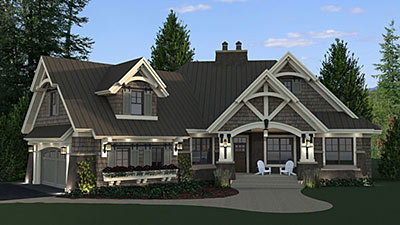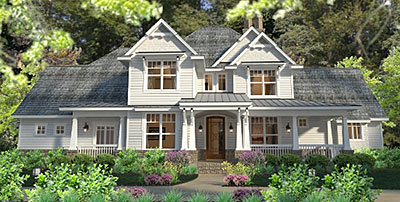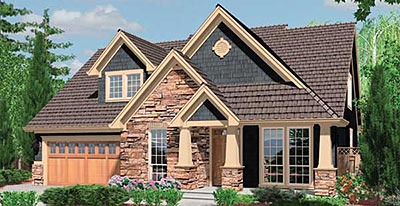by Jordan Koonts, Contributing Writer
When it comes to finding the perfect home plan, a multitude of factors come into play. Every little detail must be considered, from layout preferences to varying designs and functionalities. Your home can be as unique as you want it to be, but with seemingly endless options, it can seem almost impossible to choose. However, by defining several key elements that you may or may not want in your home, the perfect house plan can begin to take shape. Consider the following questions along with the pros and cons to begin the journey to the ideal home for you.

A one-story home can have as much or more square footage than a two-story home. A popular design, THD-9720 has 2,177 square feet of well-apportioned living space on one level.
A one-story house can be a hidden gem packed with unique features. However, it can also come with several limitations. A few elements to consider when deciding if a one-story home is right for you are:
If you or someone you live with is limited in mobility or unable to climb even a small set of stairs, a one-story home is for you. Stairs can also be a hazard for families with small children. Additionally, in many two-story homes, the laundry is actually located on the lower floor(s), often away from bedrooms. If hauling loads of laundry up and down stairs doesn’t sound appealing, maybe consider a one-story plan.
With a one-story home, there is no choice but to have all of the bedrooms on the ground floor. To some, this can create an issue with noise. Typically, one story plans have shared walls between bedrooms and living spaces. If noise is a factor that you consider an issue, larger one-story plans and most two-story plans can work to combat the problem.
A misconception with one-story homes is that they are limited in space compared to two- and three-story designs. The reality is that the amount of space in your home is only limited by you. Single-story homes can range from tiny to veritable mansions. With that much space comes ample room for customization and varying layouts. However, large square footage in a single-story home also means more lot coverage. Be sure to check your local laws and ordinances to be sure that you don’t build on more of your lot than rules allow.

Two-story homes can offer a more traditional feel with a lot of features that a one-story house can’t provide. Several factors to consider, along with the aforementioned, when looking at two-story homes are:
If your home’s energy efficiency is a concern, you may want to consider a two-story house. For the most part, a typical two-story home uses less energy than a one-story home of equal square footage. This is thanks in part to smaller foundation and roof space. However, other elements come into play when determining a home’s energy usage, such as age and quality of materials. As a general rule of thumb, two-story homes are more efficient than single stories and may result in a smaller energy bill.
With a two-story home, you have quite a lot of freedom to determine room placement. This can be tricky to navigate and a lot of factors can come into play. For instance, a bedroom placed over the living room can become filled with the sounds of television or conversations. On the opposite end, having a second floor can provide extra space downstairs which can lead to features like a larger kitchen or living room. Some two-story homes even have enough space to create an upstairs bonus or living room, an important feature for some.

A 1½-story home offers the look of a single story with much of the functionality of a two-story home. THD-5244 has split bedrooms and a spacious vaulted great room.
If you are stuck in-between a single-story home and a two-story layout, a 1½-story home might be the perfect match for you. A one-and-a-half-story home provides many of the benefits of a single story such as a spacious arrangement and the convenience of a main-level focused layout. Such a home can include upstairs bedrooms and often also gives the bonus space offered by a two-story property that can make the home feel larger. Perhaps the biggest draw, though, is that they offer two-story volume, because that missing half story is put into high and vaulted ceilings instead. For many, a one-and-a-half-story home joins several of the features they desire from different layouts into a single property. These homes do have stairs, which can be an issue for some as discussed earlier, so keep that in mind when considering such a house.